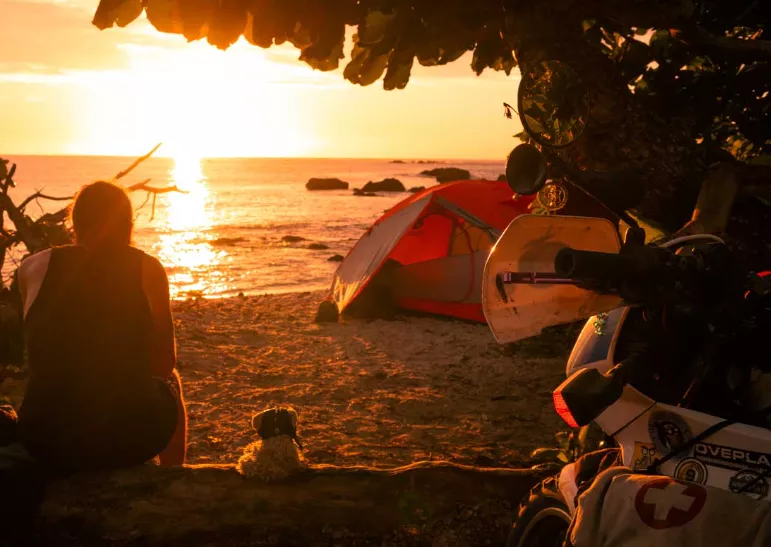Wild camping can be a thrilling way to connect with nature. But before you pitch your tent under the stars, it’s important to understand the safety aspects involved.
What Is Wild Camping?
Wild camping means camping outside designated campgrounds. You choose your own spot, often in remote places like forests, hills, or lakesides. It is a chance to escape the crowd and enjoy peace and quiet.
Why People Love Wild Camping
Many people enjoy wild camping because it feels adventurous. You get to explore nature more deeply. There are no check-ins, no camp fees, and you can wake up with amazing views. It is often seen as a way to experience fun camping without the noise of popular sites.
Is Wild Camping Legal?
Wild camping is not legal everywhere. In some countries or regions, you need permission to camp on private or protected land. In others, it is tolerated as long as you follow the rules and respect nature.
Know the Local Rules
Before you go wild camping, check the local laws. Some national parks and natural areas have strict rules. You can avoid trouble by doing a little research ahead of time or using a trusted camping guide.
Is Wild Camping Safe?
Wild camping can be safe if you prepare well and use common sense. Like any outdoor activity, there are risks. But with the right knowledge, most dangers can be avoided.
Main Safety Concerns in Wild Camping
- Weather changes
- Wild animals
- Getting lost
- Injuries
- Unsafe drinking water
- Fire hazards
- Human threats in remote areas
How to Stay Safe While Wild Camping
1. Plan Your Trip Carefully
Always plan where you are going. Let someone know your location and when you expect to return. Bring a map or GPS device in case your phone doesn’t work. Avoid setting up camp near cliffs, rivers, or dense woods at night.
2. Check the Weather Forecast
Bad weather can ruin your trip and even be dangerous. Heavy rain, strong winds, or snow can put you at risk. Always check the weather before heading out, and be ready to change plans if needed.
3. Pack the Right Gear
Wild camping needs proper gear. Bring a quality tent, sleeping bag, first aid kit, flashlight, and enough food and water. A water filter or purification tablets can help you make stream water safe to drink.
4. Learn Basic First Aid
In remote areas, help is far away. Knowing how to treat cuts, burns, and insect bites is very useful. Bring a small first aid book or save a digital copy on your phone.
5. Stay Visible and Alert
Wear bright clothes so you’re easy to find. Be aware of your surroundings. Do not camp too close to roads or trails where strangers can easily find your spot.
What About Animals?
Wild animals are often more scared of you than you are of them. However, you should still take care.
Tips to Avoid Animal Encounters
- Store food in sealed bags or containers
- Do not leave trash around your campsite
- Cook and eat away from your sleeping area
- Use scent-proof bags if you are in bear country
Fire Safety in the Wild
Campfires can be dangerous. If allowed, make fires in a safe, clear area and keep them small. Always put fires out completely before sleeping or leaving the site. In many places, fires are banned during dry seasons due to wildfire risks.
Personal Safety Tips
1. Camp With a Friend
It is safer to camp with someone. If anything happens, your partner can help or call for help. If you go solo, stay in areas where you can reach help quickly.
2. Trust Your Instincts
If a place feels unsafe or strange people are nearby, move to another location. Your safety is more important than sticking to a plan.
3. Use a Personal Locator Beacon
These devices can send your location to rescue teams. They are useful if you hike far from roads or are in rough terrain with no phone signal.
Leave No Trace
Being safe also means caring for nature. Follow the “Leave No Trace” principles:
- Pack out all trash
- Camp at least 200 feet from water sources
- Use a trowel to bury human waste 6-8 inches deep
- Do not harm trees or wildlife
Choosing a Safe Campsite
What Makes a Good Wild Camping Spot?
- Flat, dry ground
- Far from paths and roads
- Some natural shelter like trees or rocks
- Not too close to water (to avoid floods)
- Not under dead tree branches
Setting Up Camp
Once you find your spot, set up before dark. Make sure your tent is secure, and keep gear organized. Store food safely away from your sleeping area.
What to Do in an Emergency
If you get lost or hurt, stay calm. Use your map or GPS to find your location. Signal for help with a flashlight or whistle. If you can, move to a more visible area or where you last had phone signal. This helps rescuers find you faster.
Benefits of Wild Camping
Despite the risks, wild camping has many rewards:
- Peace and quiet
- Closer connection to nature
- Freedom and adventure
- Better mental health from unplugging
- Skills in survival and planning
Conclusion
So, is wild camping safe? Yes, it can be. But safety depends on you. With the right planning, gear, and knowledge, wild camping is a great way to enjoy nature. Whether you’re new or experienced, every trip teaches you more. Take time to learn, prepare well, and respect the wild. That’s the key to safe and rewarding adventures.
Related topics:
- Best Air Mattress for Tent Camping: A Comprehensive Guide
- How Much Does It Cost to Camp at a KOA?
- What to Bring on a Rainy Camping Trip: Essential Gear and Tips

